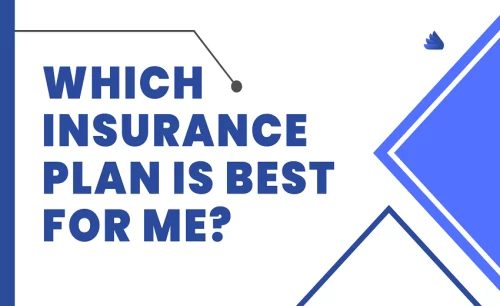Insurance rates can vary based on factors like age, driving record, and credit history. However, there are strategies you can employ to lower your annual costs. In this article, we present 5 quickest ways to lower your Auto Insurance Premium.
Increase Your Deductible:
Understanding Deductibles:
A deductible is a specific amount of money that you, as the policyholder, agree to pay towards any insurance claim before your insurance coverage comes into effect. For example, if you have a deductible of $500 and you make a claim for $2,000, you would be responsible for paying the first $500, and your insurance company would cover the remaining $1,500.
The purpose of a deductible is to share the risk between you and your insurance provider. By having a deductible, you demonstrate that you are willing to take on some of the financial responsibility for potential claims.
Opting for a Higher Deductible:
Choosing a higher deductible can lead to a lower premium for your auto insurance. When you select a higher deductible, you are essentially agreeing to bear a larger portion of the financial burden in the event of a claim. In return, insurance companies are generally willing to offer you a lower premium because they have reduced potential liability.
The benefits of opting for a higher deductible include:
- Lower Premiums: By increasing your deductible, you can enjoy a reduction in your periodic premium payments. This can result in significant savings over time, particularly if you have a good driving record and a lower likelihood of filing claims.
- Cost Savings: Lowering your premium through a higher deductible can free up extra funds that you can allocate towards other expenses or savings goals.
- Incentive for Safe Driving: With a higher deductible, you have a greater financial stake in avoiding accidents. This can encourage you to drive more cautiously and responsibly, leading to a reduced risk of incidents and potential future claims.
Considerations for Covering Initial Expenses:
Before opting for a higher deductible, it’s crucial to assess your financial situation and ensure that you have sufficient funds readily available to cover the higher initial expenses in the event of a claim. While a higher deductible can save you money in the long run, it’s important to be financially prepared to cover the deductible amount if an accident or loss occurs.
Park Your Vehicle in a Garage:
Garage Parking and Insurance Premiums:
When it comes to auto insurance, where you park your vehicle plays a significant role in determining your insurance premium. Insurers take into account the risk factors associated with different parking locations and adjust premiums accordingly. Parking your vehicle in a garage, whether it’s a personal or commercial garage, can have several advantages and potential cost savings.
Why Parking Location Matters:
Insurance companies assess the safety and security of your vehicle when determining your premium. The location where you park your car is an essential factor in this assessment. Some areas may have higher crime rates or increased risks of accidents, which can lead to higher insurance premiums. On the other hand, parking in a secure and protected environment, such as a garage, can result in lower premiums.
Advantages of Parking in a Garage:
- Reduced Risk of Theft: Vehicles parked in garages are less susceptible to theft. Garages provide a physical barrier that deters potential thieves and reduces the risk of break-ins. Insurance companies recognize this lower risk and offer preferred rates for vehicles parked in garages.
- Protection from Damage: Parking in a garage provides protection from various weather elements such as hail, storms, and extreme temperatures. Additionally, it safeguards your vehicle from potential damage caused by falling objects or accidental collisions. Insurers consider the reduced risk of damage when calculating premiums.
How Garage Parking Lowers Premiums:
Insurance providers offer potential discounts and savings for vehicles parked in garages due to their increased security and protection. Here’s how garage parking can help lower your auto insurance premium:
- Preferred Rates: Insurance companies often offer preferred rates for vehicles parked in garages. These rates reflect the reduced risk of theft and damage associated with garage parking. Preferred rates can lead to significant savings on your annual premium.
- Theft Prevention Discounts: Some insurers provide specific discounts for anti-theft measures implemented in garages, such as security systems, alarms, or surveillance cameras. By investing in these security features, you not only protect your vehicle but also qualify for potential premium reductions.
- Reduced Comprehensive Coverage Costs: Comprehensive coverage protects your vehicle from non-collision incidents, such as theft, vandalism, or weather-related damage. By parking your car in a garage, you minimize the exposure to these risks, which can result in lower premiums for comprehensive coverage.
Shop Around and Negotiate:
The Importance of Shopping Around:
When it comes to auto insurance, shopping around is a crucial step in finding the best coverage at the most affordable price. Obtaining multiple quotes from different insurers allows you to compare prices, coverage options, and policy features. Here are the key benefits of shopping around:
- Cost Savings: Insurance rates can vary significantly between different providers for the same coverage. By obtaining quotes from multiple insurers, you can identify the most competitive premiums and potentially save a significant amount of money on your auto insurance.
- Customized Coverage: Each insurance company offers different coverage options and policy features. Shopping around allows you to explore the various options available and find the coverage that best suits your needs. You can tailor your policy to include the specific coverage types and limits that align with your requirements and budget.
- Policy Features and Benefits: Beyond price, insurance policies can differ in terms of additional benefits and features. By shopping around, you can assess the value-added services provided by different insurers. These may include roadside assistance, accident forgiveness, or discounts for safe driving habits.
Bargaining and Negotiating:
Once you have obtained multiple quotes, you can leverage this information to negotiate with insurers and potentially secure better rates or additional benefits. Here are some tips and strategies for effective negotiation:
Understand Your Needs and Prioritize:
Before negotiating, clearly define your coverage requirements and priorities. Consider the coverage limits, deductibles, and policy features that matter most to you. This understanding will help you negotiate for the best terms that align with your needs.
Highlight Your Positive Attributes:
If you have a good driving record, a high credit score, or multiple policies with the same insurer (e.g., home and auto insurance), emphasize these positive attributes during negotiations. Insurers may offer discounts or better rates based on these factors.
Mention Competitor Quotes:
Inform the insurer that you have obtained quotes from other companies and highlight any lower rates or better coverage options you received. This demonstrates that you are an informed consumer and gives the insurer an opportunity to match or improve upon their initial offer.
Consider Factors Beyond Price:
While price is an important factor, also evaluate other aspects of the insurer’s service. Consider factors like customer service reputation, claims handling process, and overall satisfaction of existing customers. These considerations should play a role in your decision-making process.
Be Polite and Persistent:
Approach negotiations with a polite and respectful attitude. Remember that the goal is to reach a mutually beneficial agreement. If the initial offer doesn’t meet your expectations, don’t be afraid to ask for further discounts or additional benefits. Persistence can sometimes lead to better results.
Enroll in a Defensive Driving Course:
Understanding Defensive Driving Courses:
Defensive driving courses are educational programs designed to enhance driving skills and knowledge, with a focus on proactive driving techniques to prevent accidents and promote safe driving behaviors. These courses cover various topics, including defensive driving strategies, traffic laws, hazard awareness, and effective collision avoidance techniques. They are typically offered by state-approved organizations or driving schools and can be completed in a classroom setting or online.
The potential benefits of completing a state-approved defensive driving course include:
- Improved Driving Skills: Defensive driving courses provide valuable knowledge and techniques that can enhance your driving skills. By learning defensive driving strategies, you can better anticipate and respond to potential hazards on the road, reducing the likelihood of accidents.
- Increased Awareness: These courses emphasize the importance of being aware of your surroundings, identifying potential risks, and practicing defensive driving techniques. This heightened awareness can help you avoid dangerous situations and make better decisions while driving.
- Refreshed Knowledge: Defensive driving courses cover traffic laws, rules, and regulations, providing a refresher on essential driving knowledge. Staying updated with current traffic laws helps you maintain compliance and avoid traffic violations that could impact your insurance premiums.
Premium Discounts for Course Completion:
Completing a state-approved defensive driving course can potentially result in premium discounts offered by many insurance providers. These discounts are typically applied to your liability and/or collision coverage premiums. Here are some key points to consider:
- Potential Discounts: Insurance companies recognize the value of defensive driving courses in promoting safe driving habits and reducing the risk of accidents. As a result, they may offer premium discounts as an incentive for drivers who have completed these courses. The discounts can range from 5% to 10% or even more, depending on the insurer and the state you reside in.
- Eligibility and Verification: To qualify for a premium discount, you must typically complete a state-approved defensive driving course. Check with your insurer to ensure that the course you plan to take is approved and meets their eligibility criteria. After completing the course, you may need to provide a certificate of completion to your insurer as proof to receive the discount.
- Duration of Discounts: The duration of the premium discount varies among insurers. Some may apply the discount for a specific period, such as three years, while others may offer it on a continuous basis as long as you maintain a clean driving record.
Evaluate and Downsize Your Coverage:
Assessing Your Coverage Needs:
When it comes to auto insurance, it’s essential to evaluate your coverage needs to ensure you have adequate protection without paying for unnecessary coverage. Here’s a guide to help you assess your insurance requirements:
- Vehicle Age and Value: Consider the age and value of your vehicle. Newer or more expensive vehicles may require comprehensive and collision coverage to protect against damage or loss. Older or less valuable vehicles may not require as much coverage and could benefit from adjusting your policy accordingly.
- Personal Circumstances: Assess your personal circumstances, such as your driving habits, the frequency of vehicle use, and where you primarily drive. For example, if you have a short commute and rarely use your car for long trips, you may not need extensive coverage for long-distance driving or rental car reimbursement.
- Financial Situation: Evaluate your financial situation and ability to cover potential expenses. While reducing coverage can lower your premium, it’s important to ensure you have sufficient protection in case of an accident or unexpected events. Consider your ability to pay for repairs, medical bills, or other liabilities if an incident occurs.
- State and Legal Requirements: Familiarize yourself with your state’s minimum insurance requirements. Ensure that your coverage meets these legal obligations. However, keep in mind that minimum coverage may not provide adequate protection in all circumstances, so it’s important to evaluate your individual needs beyond the legal requirements.
Downsizing Coverage:
Downsizing your coverage can be a viable option to lower your auto insurance premium. However, it’s crucial to carefully consider the benefits and potential drawbacks. Here are some points to keep in mind:
Benefits of Downsizing Coverage:
- Cost Savings: Downsizing your coverage can lead to immediate cost savings on your insurance premium. Removing unnecessary coverage or reducing coverage limits can help align your premium with your budgetary needs.
- Flexibility: Adjusting your coverage allows you to customize your policy to match your evolving needs. If you find that you no longer require certain types of coverage, downsizing can provide flexibility and allow you to allocate your insurance budget elsewhere.
Considerations for Downsizing Coverage:
- Adequate Protection: While reducing coverage can save you money, it’s important to ensure that you still have adequate protection. Consider the potential financial risks you would face if you were involved in an accident or faced other incidents. Strike a balance between cost savings and maintaining coverage that protects you and your assets.
- Assessing Risk Tolerance: Evaluate your risk tolerance level. Some individuals may be comfortable assuming more risk by reducing coverage, while others may prefer a higher level of protection. Consider factors such as your driving history, local accident rates, and your ability to handle unexpected expenses.
Finding the Right Balance:
To achieve the right balance between cost and coverage, consider the following steps:
- Review Your Policy: Carefully review your current policy and identify areas where you may have overlapping or excessive coverage.
- Consult with an Agent: Speak with your insurance agent or representative to discuss your coverage needs and potential cost-saving options. They can provide personalized guidance based on your circumstances.
- Compare Quotes: Obtain quotes from different insurers while considering the coverage options and limits that meet your requirements. This will help you find the best balance of cost and coverage for your specific needs.
Conclusion:
Lowering your auto insurance premium can be achieved through various strategies. By increasing your deductible, parking in a garage, shopping around and negotiating, enrolling in a defensive driving course, and evaluating and downsizing your coverage, you can potentially reduce your insurance costs. Remember to assess your individual needs and circumstances before making any changes to your coverage. Start implementing these strategies today and find the best ways to save on your auto insurance premiums.







